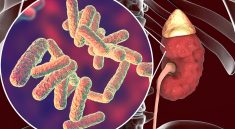What is a drug interaction?
Drug interaction is whereby a reaction occurs between drug and a drug, drug and food/beverage or a drug and a condition. The effects of interactions can range from mild to severe cases. You should understand the outcome of combining medications with other medications, beverages/foods or conditions to avoid risks of drug interactions. Drug interaction checker helps in determining the possible interactions that a drug can have on other drugs, foods or diseases. You can consult your doctor for clarity and more information on types of drugs that cannot be taken together.

Types of drug interactions
There are three types of the drug interacting that can happen as discussed below.
Drug-drug interactions
Drug-drug interactions occur when a patient takes a drug that interacts with other medications. Drug interaction affects the way your medication work by either decreasing the function of drugs, increased blood level, enhanced side effects or possible toxicity of other drugs. An example is when you take an antihistamine like the Benadryl together with a pain medication such as Vicodin, you will have increased drowsiness because both medicines cause drowsiness as a side effect.
Drug-beverage/food interactions
Some drugs do not work well with foods and beverages. The effects can be fatal. You might have noticed in one, or several of your prescription bottles have a sticker with a warning that you avoid some fruit juice such as grapefruit juice. Grapefruits are responsible for lowering the number of liver enzymes that break down medications and the level of these drugs can be too high in the blood that it can be toxic. An example of drugs that do not go well with grape juice is the statins that are used to lower cholesterol levels. When taken together with grapes, the patient may experience rhabdomyolysis, a severe muscle injury.
Drug-disease interactions
An existing medical condition can cause interaction with other drugs. An example is phenylephrine or pseudoephedrine in patients with high blood pressure. Pseudoephedrine and phenylephrine increase blood pressure, and when given to patients with blood pressure the reaction is dangerous.
How drug interactions occur
Pharmacodynamics Interaction can happen when two drugs that act on a similar receptor site is administered causing great (synergistic or additive) or reduced effects. An example is the chlorpromazine used to stop vomiting and nausea. When this drug is applied together with an antipsychotic medication called haloperidol used for schizophrenia, the effects are risky and may be lethal as they cause irregular heart rhythm.
If a drug’s absorption, metabolism, distribution or excretion is affected by another drug, then the interaction is called Pharmacokinetic interaction. Pharmacokinetic interaction has been broken down and explained as follows.
Absorption
Some drugs, foods or diseases inhibit, or increases the rate of absorption of other medication drugs. An example is calcium carbonate (Maalox or Tums) which binds and block absorption of some drugs such as dolutegravir (Tivicay), an HIV treatment. Therefore the doctor will instruct that the dolutegravir be taken six hours after or 2 hours before medicines with calcium are taken. Similarly, many calcium containing drugs are not supposed to be consumed with milk or dairy products as they bind calcium, therefore, lowering the drug effectiveness.
Metabolism
The CYP450 enzymes in the liver break down drugs so as they can be eliminated from the body. These enzymes can sometimes increase or reduce in the liver. The number of enzymes in the liver affects how the drugs are being broken down. When you combine simvastatin used to regulate cholesterol level with diltiazem used for controlling blood pressure, the blood level and the simvastatin side effects will be elevated. Diltiazem reduces the number of functioning CYP450 3A4 enzymes used to break down the cholesterol medication. The high amount of simvastatin in the blood lead to severe muscle and liver damages.
Distribution
When two or more drugs that function by bounding proteins are administered, these drugs will compete with each other for binding sites that are limited in the plasma proteins. This will cause protein-binding interactions. An example is when a triglyceride and the cholesterol-regulating drug, fenofibric acid, is taken with a blood thinner, warfarin, the effects of warfarin will be increased leading to excessive bleeding in case of an injury.
Excretion
You will need regular monitoring by your doctor if you are taking lithium together with nonsteroidal anti-inflammatory drugs (NSAIDs) such as indomethacin. This is because when indomethacin is used with lithium, indomethacin will reduce the excretion of lithium as it affects kidney functioning.
Reasons for checking drug interactions
It is essential to check drug interaction interactions because;
- Drug interactions alter the level of medication and consequently how the medicines work
- The drug interaction can be toxic and cause risky side effects
- You can end up having a worse medical condition than before
Factors that cause drug interactions.
Interactions depend on several factors which include;
- The number of drug types you are taking
- Liver, kidney function, and age
- Patients medical conditions
- Diet
- Genetics and the metabolic enzymes
- Abuse of illegal drugs and alcohol
How you can check drug interaction
Talk to your doctor or your pharmacist on all the medications you are taking so as they can determine the possibility of interactions. Share your drug history as some drugs stay in the system for an extended period.
Check the possibility of an interaction yourself using online applications such as drug interaction checker and by reviewing the medication guide and warnings on the prescriptions bottles. Make sure that you have the latest information on the drug as information might change with research findings.
When you find yourself at risk of drug interaction, call your pharmacist or doctor immediately. They should be able to prescribe other medication and recommend what you should do next. Remember that Interactions can be prevented as long as you can determine the possibility of interaction before ingesting any drug with other drugs, foods, beverages or when suffering from other medical conditions.



